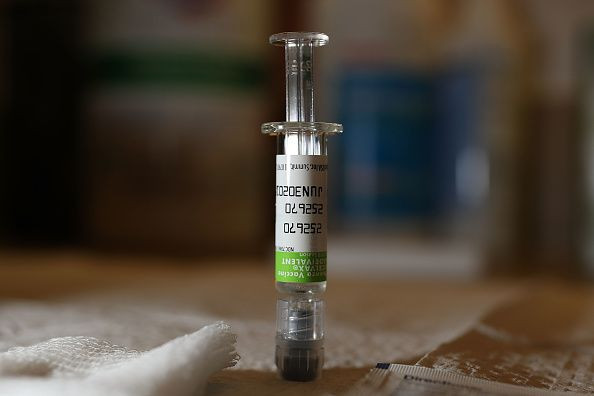12 Diseases That Can Be Prevented By Vaccination

Despite rejection from certain sectors, vaccination remains a scientifically-proven method of preventing a wide range of potentially deadly and debilitating diseases. In some countries and U.S. states, vaccination is required at birth and is given in measured doses throughout a child’s life before he or she enters kindergarten. Some booster shots are also administered as a person gets older, even in adulthood.
The bottom line is that certain diseases have no known cure and the only proven and tested-safe method is via these medications. The list is long, but here are 12 common diseases that can totally be prevented if early vaccination is done.
1. Hepatitis A
Hepatitis A is a viral liver disease that usually spreads when you drink or eat something that has been exposed to the feces of somebody who has the virus. It can also be transferred via sexual contact. This vaccine is part of the routine schedule for children and is given in two doses: at 12-23 months and then at 2-4 years. Adults also take it in two doses when they are at risk, such as drug use, traveling to a place where it is common, high sexual activity or working with animals or labs where it is present.
2. Hepatitis B
Hepatitis B is common in the U.S. and has two types: acute (weeks to six months) and chronic (more than six months). It is spread through semen, blood and other body fluids. It can also be passed on during childbirth. There are two vaccines against this disease: the Hepa B vaccine for babies, children and adults and the Hepa A and B combination for adults.
3. Chickenpox (Varicella)
Chickenpox is highly contagious and is spread if the virus is breathed in or if you touch chickenpox blisters. This disease can also escalate to shingles if untreated. It has two vaccines: Chickenpox, to protect both children and adults, and MMRV, to protect kids against measles, mumps, rubella and chickenpox.
4. HPV (Human Papillomavirus)
HPV is common in the U.S., with one in four people having it. HPV is composed of over 150 types of viruses and is spread via intimate skin-to-skin exposure. Note that some HPV infections are chronic and can sometimes lead to cancer. Everybody needs to have this vaccine, with the routine schedule typically set for preteens and teenagers ages 9 to 14 years old and teens and young adults ages 15 to 26 years old.
5. Hib (Haemophilus Influenzae Type B)
Hib is a bacterial infection and usually affects kids 5 years old and below, though it can also appear in adults. Untreated, it can lead to pneumonia, meningitis, epiglottitis and bacteremia. It is spread through droplets in the air that are breathed in. Hib is part of the routine vaccination schedule given at 2 months, 4 months, 6 months and then 12-15 months old.
6. Flu (Influenza)
This is probably the most common disease of them all. However, if untreated, it could lead to pneumonia, heart or brain inflammation, sepsis, or long-term health problems such as heart failure and asthma. Luckily, you can get vaccinations annually. However, those who are pregnant, aged 65 years and up or younger than 5 years, and with long-term health issues such as cancer, asthma or diabetes have a high risk for complications.
7. Measles
This had been eradicated totally in the U.S. in the past years but has recently made comeback in outbreak levels in some states. There are two types of vaccines: MMR for measles, mumps and rubella, and MMRV, to include chickenpox. It is part of the routine schedule given at 12-15 months (dose one) and then at 4 to 6 years (dose two). Any adult who has not had the vaccine also needs at least one dose.
8. Polio
Polio is highly contagious and is spread when you get in contact with feces or body fluids of someone who has it. It can also spread if an infected person sneezes or coughs. It is routinely given in four doses before a child turns 6 years old. Adults who are at high risk should also get three doses, depending on their vaccination history.
9. Shingles (Herpes Zoster)
Shingles consists of painful blisters and rashes, and if untreated, can lead to post-herpetic neuralgia. This risk of complication is higher the older you are. People aged 50 years and up need two doses of its vaccine.
10. Pneumococcal Infection
Though more common in children, this disease can also affect adults. It is spread from person to person can lead to serious problems in the blood, lining of brain and spinal cord and the lungs. Its vaccine is part of the routine schedule given to infants and children. It is also recommended for adults aged 65 years and older.
11. Rabies
While rabies is not too common in the U.S., it cannot be denied that it is still a deadly disease. If you have been bitten by an animal that might have the virus, it is important to get vaccinated immediately. Rabies vaccine is given in three doses, four in some cases.
12. Tetanus
While uncommon, tetanus is dangerous and deadly. There are four types of vaccines, with one of them, DTaP, given as part of the routine schedule in several doses before a child turns 6 years old. A booster shot is given at 7 to 18 years old, and then another every 10 years thereafter. Pregnant women also need a booster dose during the third trimester.
© Copyright IBTimes 2024. All rights reserved.





















